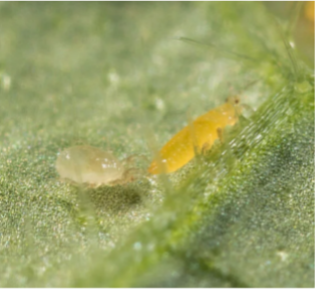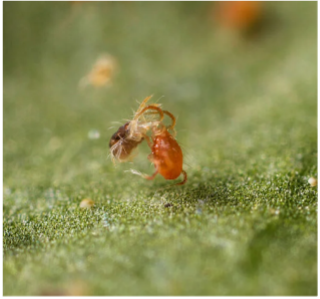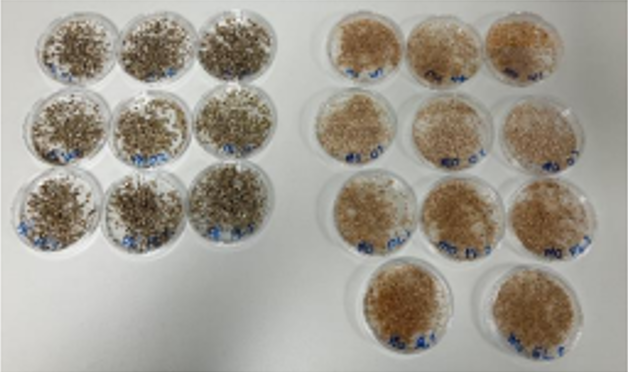

In rose, strawberry, cucumber and pepper cultivation, beneficial organisms like parasitic wasps and predatory mites are used to prey on or parasitize harmful pests like aphids, thrips, spider mites, whitefly or caterpillars. Alternatively, microbial insecticides, which are composed of naturally occurring bacteria, viruses, or fungi, can be used to target specific pest species while leaving non-target organisms unharmed.
To prevent negative impact on Integrated Pest Management (IPM), growers want to understand if PAW could have an effect on these natural predators. In February 2025, an experiment was conducted to examine the effect of PAW, when directly sprayed, on two species of predatory mites that are commonly used: Transeius montdorensis and Phytoseiulus persimilis.
Transeius montdorensis is a species of predatory mite and known for their effectiveness in controlling pest populations, including thrips, whitefly, non-webbing spider mites and rust mites, actively preying on pest eggs, larvae, and nymphs. This contributes to the disruption of the pest's life cycle and helps in reducing overall pest numbers (source: https://www.koppert.com/crop-protection/).

The predatory mite Phytoseiulus persimilis is by far the most important natural enemy of two-spotted spider mite (Tetranychus urticae) and has been used in many crops worldwide, mainly in greenhouses, but also in outdoor crops such as strawberries. It is a specialist predator of spider mites and can control spider mite infestations very quickly but doesn’t feed on other prey (source: https://www.koppert.com/crop-protection/).

The release of spider mites and application with PAW were on Day 0 (February 4th, 2025) and was evaluated on Day 1, Day 2 and Day 3. The experiment was conducted in three repetitions for 4 objects. The treatment with Elasto G5 was only conducted on Transeius montdorensis in two repetitions.

The following method has been applied:

No differences were observed between the treatments for Phytoseiulus persimilis. During spraying, part of the liquid was absorbed by the carrier material. However, the majority of the Phytoseiulus persimilis came into contact with the spray solution. The mites had no difficulty moving over the carrier material, which was vermiculite in this experiment.
For Transeius montdorensis (and feeder mites), no differences were observed between treatments. Again, part of the liquid was absorbed by the carrier material. The majority of the Transeius montdorensis mites were hit by the spray solution. The mites had slightly more difficulty moving over the wet carrier material but could easily navigate the petri dish or dry carrier material. The carrier material in this experiment was bran.

No effect of Plasma Activated Water or Elasto G5 was observed on the predatory mites Transeius montdorensis and Phytoseiulus persimilis.
We continuously welcome new partners that join VitalFluid on our journey.
For inquiries, reach out to info@vitalfluid.com